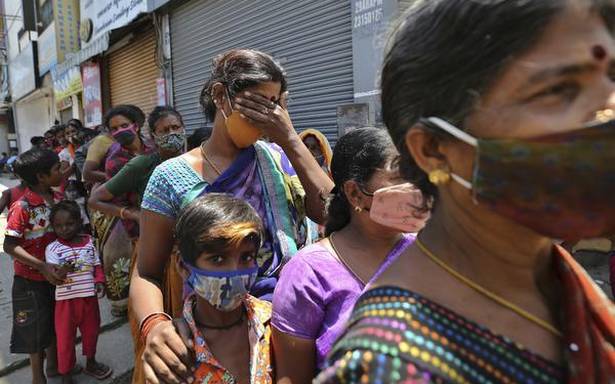It suggests all children need to be evaluated by blood metabolic biomarkers too
:A recent paper by researchers from St John’s Medical College and Sitaram Bhartia Institute of Science and Research has found that, in India, metabolic indicators of obesity (abnormal blood sugar or blood lipids) are seen well before the child becomes obviously overweight by anthropometry.
The paper published in European Journal of Clinical Nutrition in April suggests that all children need to be evaluated by blood metabolic biomarkers, in addition to the standard anthropometry (height and weight) markers.
While the biggest problem in India is perceived to be undernutrition, where children have weight and height well below the World Health Organization reference for their age (undersize), a worry has begun to surface that there is also an increase in overweight children.
Survey findings
The most recent survey available, the Comprehensive National Nutrition Survey (CNNS), done in 2016-2018 under the aegis of the Ministry of Health and Family Welfare in collaboration with UNICEF and the Population Council, shows that there are 35% stunted and 33% thin (underweight) among children less than 5 years in India, but also, about 5% overweight.
“However, this double burden, as measured by body size (anthropometry), hides a major unseen problem. While we measure over and undernutrition with external signs that we can see, there is a hidden but very real risk, called metabolic disease or risk, that occurs even before children become overweight, and even in thin children,” said Prof. Anura Kurpad of St John’s Medical College.
He and Prof. Harshpal Sachdev of the Sitaram Bhartia Institute of Science and Research in New Delhi are the corresponding authors of the paper.
Blood sampling
“Metabolic markers of obesity are measured by blood sampling, where an increase in blood sugar or blood lipids has damaging consequences for tissues through glycation (as in diabetes) or through the deposition of lipids in blood vessels. These are also referred to as cardio-metabolic risk factors, as they substantially increase the propensity to develop related non-communicable diseases (NCDs) including hypertension, heart attack, angina, stroke and diabetes,” said Prof .Sachdev.
In the CNNS survey, both anthropometry and venous blood metabolic biomarkers of overnutrition were evaluated in about 20,000 children across India. The biomarkers were blood glucose, glycated hemoglobin, serum triglycerides and serum cholesterol, which are standard risk biomarkers used in medicine to diagnose NCD like diabetes and hypercholesterolemia. Using these biomarkers, the proportion of children with at least one of the biomarkers with an abnormal value was 56% in all children studied, the authors said.
“What was really worrying was that this proportion of children with at least one biomarker with an abnormal value was high even in undersized, thin (54%) or stunted (59%) children, who would otherwise be expected to have an undernourished metabolic profile,” Prof. Kurpad pointed out.
He said there is scant recognition of this paradox of undersize (undernutrition) and overweight-related blood profile (metabolic obesity) occurring simultaneously in the same child and adolescent.
“The current magnitude of this phenomenon at national level is alarming,” he asserted.
Nutrition policy
The authors pointed out that anthropometric indicators are used to drive nutrition policy.
“However, there are serious implications for how we feed children in safety nets like the ICDS and Mid Day Meal programmes. This is both in terms of the quantity as well as the quality of food,” the authors said.
They suggested that all children should be evaluated by metabolic biomarkers in addition to the standard anthropometry markers.
“If this is not done, and if there is an aggressive and inappropriate (over) feeding of apparently thin or stunted children with cereal-dominant (carbohydrate overfeeding) diets or if this is ignored in a rapidly transitioning and urbanising country, where physical activity is low and the intake of ultra processed foods is rising, there is the possibility of a very large wave of NCD that will attack the present generation of children as they grow into adults,” they added.
Source: Read Full Article

